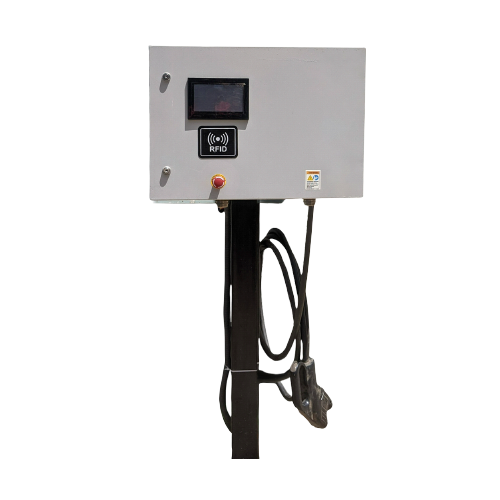In the dynamic landscape of electric vehicle (EV) charging, the choice between AC and DC chargers is a crucial consideration that significantly impacts the charging experience. AC chargers, drawing power from the alternating current of the grid, provide a common and accessible means of charging found in residential areas and public spaces.
On the other hand, DC fast chargers, leveraging the direct conversion of AC power to DC power, offer an expedited charging solution, particularly suited for long-distance travel.
This distinction goes beyond power source, extending to factors like charging speed, compatibility, infrastructure, cost, efficiency, charging standards, and vehicle limitations. AC chargers, adaptable to most EVs, are prevalent in diverse locations, while DC fast chargers are strategically positioned along highways for quick and efficient charging.
AC and DC fast chargers have some key differences. Here are 10 differences between them:
1. Power Source: AC chargers use alternating current from the power grid, while DC fast chargers directly convert AC power to DC power.
2. Charging Speed: DC fast chargers can charge electric vehicles (EVs) much faster than AC chargers. DC chargers can provide high power levels, enabling rapid charging.
3. Compatibility: AC chargers are compatible with most EVs, while DC fast chargers are specifically designed for vehicles that support DC fast charging.
4. Infrastructure: AC chargers are more commonly found in residential areas, workplaces, and public parking lots. DC fast chargers are typically installed along highways and in commercial charging stations.
5. Cost: AC chargers are generally less expensive to install and operate compared to DC fast chargers, which require more complex technology.
6. Efficiency: DC fast chargers are more efficient in terms of converting energy into charging power, resulting in faster charging times and less energy waste.
7. Charging Standards: AC chargers typically follow standard charging protocols like the Type 1 or Type 2 connectors. DC fast chargers use different standards like CHAdeMO or CCS (Combined Charging System).
8. Vehicle Limitations: AC chargers may have limitations on the maximum charging power they can provide, depending on the vehicle’s onboard charger. DC fast chargers can provide higher power levels, but the vehicle must support fast charging.
9. Charging Networks: AC chargers are often connected to various charging networks, allowing users to access multiple charging stations. DC fast chargers are more commonly found within specific charging networks dedicated to fast charging.
10. Charging Locations: AC chargers are typically found in more diverse locations, including residential areas, parking lots, and shopping centers. DC fast chargers are primarily located at specific charging stations along highways or major routes for long-distance travel.
EV Fast EV Chargers
As we navigate the evolution of EV charging, companies like EV Fast stand out as pioneers in the field. As an EV charger manufacturer, EV Fast is dedicated to advancing charging technology, contributing to the seamless integration of electric vehicles into our daily lives.



